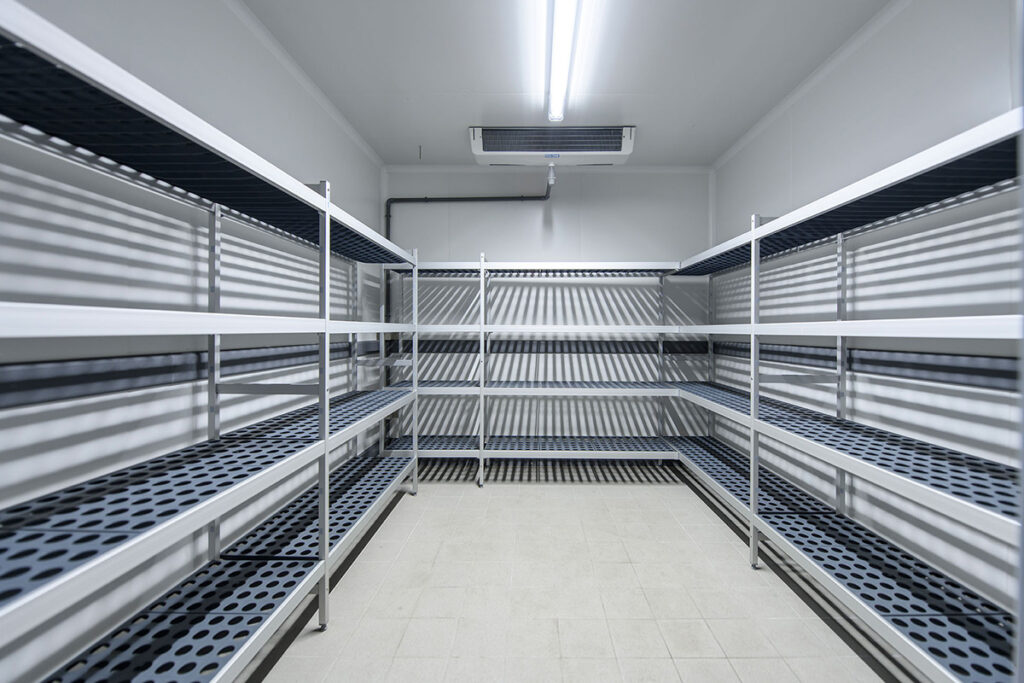Freezer rooms play a critical role in ensuring efficient storage for businesses dealing with perishable goods. Whether you’re managing a restaurant, catering service, supermarket, or pharmaceutical company, selecting the appropriate freezer room size is crucial for maintaining product quality and minimizing operational costs. This guide will walk you through the essential factors to consider when making this pivotal decision.

The right freezer room can save your business money, improve operations, and ensure product safety. But how do you determine what size works best for your needs? From assessing your storage requirements to factoring in future growth, understanding the essentials will help you make an informed choice.
In this article, we’ll explore key considerations, including storage capacity, space constraints, energy efficiency, and long-term business goals. By the end, you’ll have a clear roadmap to select the ideal freezer room for your business.
What is a Freezer Room?
A freezer room is a large, insulated storage space designed to keep goods frozen at consistent temperatures. Unlike standard refrigerators, freezer rooms offer higher capacity and customizable designs to suit commercial and industrial needs.
Why Choosing the Right Size Matters
- Cost-Effectiveness: Overestimating your needs leads to unnecessary expenses, while underestimating can disrupt operations.
- Energy Efficiency: A properly sized freezer room optimizes energy use and reduces utility bills.
- Operational Efficiency: Adequate storage prevents overcrowding and ensures smooth workflow.
Factors to Consider When Choosing the Right Size Freezer Room
Evaluate Your Storage Needs
Before investing, analyze your current and future storage requirements. Take inventory of:
- Product types and their storage temperatures.
- Seasonal variations in stock volume.
- Delivery schedules and stock rotation rates.
Assess Available Space
Measure the designated area for the freezer room, accounting for:
- Height, width, and length of the space.
- Accessibility for staff and equipment like trolleys or forklifts.
- Ventilation and proximity to power sources.
Capacity vs. Business Growth
Plan for future growth. Overcrowded freezers can compromise product quality and safety. Choose a size that accommodates projected business expansion without overspending.
Storage Guidelines for Different Industries
Food and Beverage
- Restaurants: Smaller freezer rooms suffice for daily or weekly stock.
- Catering Services: Larger spaces are necessary for bulk storage.
- Supermarkets: Require multiple zones for different product categories.
Pharmaceuticals
- Maintain precise temperature control for vaccines, medicines, and samples.
- Choose a size that allows organized shelving for easy access.
Logistics and Distribution
- High-volume storage demands larger freezer rooms with compartmentalized areas.
- Optimize layout for rapid inventory turnover.
The Role of Temperature Zones in Freezer Rooms
Some businesses require different temperature zones within a freezer room. Consider a multi-zone freezer if your products vary in their freezing requirements.
Energy Efficiency Considerations
An oversized freezer room wastes energy, while an undersized one overworks cooling systems. Look for:
- Proper insulation to minimize energy loss.
- Energy-efficient compressors and fans.
- LED lighting for reduced power consumption.
Budgeting for Your Freezer Room
Freezer room costs include installation, maintenance, and operational expenses. Factor in:
- Upfront costs for equipment and installation.
- Long-term energy savings with efficient models.
- Regular maintenance to extend the lifespan.
Customizable Freezer Rooms: A Worthy Investment
Tailored freezer rooms can maximize efficiency for businesses with unique needs. Custom options include:
- Adjustable shelving and layouts.
- Temperature monitoring systems.
- Access doors or loading docks for streamlined operations.
Tips for Choosing a Reliable Supplier
- Look for established suppliers with strong reviews.
- Request detailed quotes and specifications.
- Check for warranties and after-sales support.
How to Optimize Space in Your Freezer Room
- Use vertical shelving to maximize storage.
- Implement inventory management practices for better organization.
- Allocate specific zones for different products.
The Importance of Maintenance and Upkeep
Routine maintenance ensures the longevity and efficiency of your freezer room.
- Schedule regular inspections.
- Clean condenser coils and fans.
- Monitor temperature and humidity levels.
FAQs
- What is the ideal size for a small business freezer room?
Small businesses often require compact freezer rooms, typically ranging from 10 to 20 square meters, depending on their stock turnover and product type. - How do I calculate storage capacity for a freezer room?
Measure product volume, leaving space for air circulation. Multiply the area by the height to estimate total storage. - Can I upgrade the size of my freezer room later?
Yes, modular freezer rooms allow scalability to accommodate business growth. - Are custom freezer rooms more expensive?
While initially pricier, custom solutions save money by optimizing space and energy efficiency. - How much energy does a freezer room consume?
Energy use depends on size, insulation quality, and cooling systems. Energy-efficient models significantly reduce consumption. - What industries benefit most from freezer rooms?
Food services, pharmaceuticals, logistics, and supermarkets are the primary industries relying on freezer rooms.
Conclusion
Choosing the right size freezer room for your business is a strategic decision that impacts operational efficiency, cost savings, and product quality. By evaluating your storage needs, space constraints, and long-term goals, you can invest in a freezer room that supports your business’s growth and success.
With careful planning and professional guidance, your investment will pay off in improved operations and customer satisfaction.

